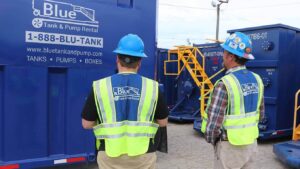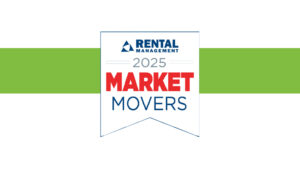The ARA’s Rental Market Monitor recently reported a predicted 2015 annual growth rate of 8.5% for construction equipment rental, 9% for general tool rental and 3.5% for special event rental. This positive economic outlook has not only attracted new industry investment, but also presents significant growth opportunities for all rental sectors.

Now, you may think, “I DO correctly utilize my Point-of-Rental software!” However, after consulting with hundreds of rental stores across the country, The Stansberry Firm has found that the majority of rental stores aren’t maximizing the capabilities of their rental software.
“The first rule of any technology used in a business is that automation applied to an efficient operation will magnify the efficiency.” -Bill Gates
Point-of-Rental is one of the best rental software packages offered to all sectors of the rental industry. With over 400 customized reports, rental businesses can track each aspect of their operations, from invoicing and fleet management, to rental rates and financial reporting, to utilizing the pairing of accounting packages such as QuickBooks or Microsoft Dynamics.
Let’s review ways to maximize use of your Point-of-Rental software to maximize operations and cash-flow:
Rental Inventory Management
Your rental inventory is likely your single largest investment. You should look at your inventory much like a stock portfolio, and your dollar utilization is your return on investment.
-
Financial (Dollar) and Physical (Time) utilization by category and unit:
Point-of-Rental offers a report called “Item Overlap” which can help determine normal and peak demands for any particular item, such as backhoes or tables. The report may show, for example, that the maximum number of tables ever rented at one time is 65, but the company has 100 in inventory. You can also drill down by category and find that backhoes have very high dollar utilization, while excavators have very low dollar utilization. Use these reports to determine which category items your company should invest in and which items you might eliminate or minimize when making purchasing decisions. Below is a chart of overall target dollar utilization by rental sector:
-
Repairs and Maintenance:
Point-of-Rental also allows record keeping for repairs and maintenance by unit. We recommend following up on these reports regularly to find problematic equipment units that need more than routine or preventative maintenance on a regular basis. You may be surprised to find that multiple units are costing your company big bucks and should likely be replaced. Keeping track of R&M reports can also help your service department maintain more efficient parts inventory, which can eliminate idle stock or excessive item purchases that will go unused.
-
Missed Rentals:
The Point-of-Rental Missed Rentals report is an excellent tool for counter staff and sales representatives to document missed rental opportunities. Missed rentals may be due to lack of requested rental items, rental rates or even poor customer service. View these reports as your customers’ voice and utilize them to improve company policy, establish better rates or invest in high-demand rental units.
Rate Control
Rental rates should be reviewed at least quarterly, not every few years. Discounts should be offered only on a case-by-case basis and be limited and approved by management. Sales individuals should be monitored to ensure that no one is reducing rates in order to “gain” sales revenues:
-
Establishing Competitive Rates:
Establishing competitive rental rates can be tricky. Customers are notorious for pushing discounted rates by quoting lower rates from competitors, which may be inaccurate.
Point-of-Rental has teamed up with Rouse Analytics to provide construction equipment rental companies with a useful tool for determining competitive rates. By collecting monthly reports of local and national rental companies’ actualized rental rates per equipment unit, Rouse Analytics users are provided with reliable data to stay competitive in their market. We highly recommend construction equipment rental companies investigate this service to determine if your area is available for Rouse reports, and to contract the service either on a regular or one-time basis to compare your rental rates to local competitors. If Rouse is not available to your company, many rental companies call around to competitors, posing as potential customers in order to gain knowledge of rates offered on comparable equipment.
-
Discounted Rates:
Utilize Point-of-Rental to sort and analyze invoices by daily, weekly and monthly rentals to determine discount frequency for each rental. You will likely be surprised by the regularity and amount of discounts given! Discounting rates is dangerous; it can become commonplace and will eventually re-position your company as a cut-rate competitor, which ultimately diminishes revenue.
Your book rental rates should reflect market reality, and discounted rates should be applied only in certain instances. Discounts on daily rentals should be prohibited and longer-term rental discounts should be limited to less than 10% for most cases. Any larger discounts should be approved by upper management and only on a case-by-case basis.
-
Sales Team Performance:
Point-of-Rental has the capability of tracking invoices by sales person. Each rental will produce data by quoted and actualized rental rates, customer accounts and rented units. Utilize this capability to determine if a member of your sales force is consistently quoting below established rates, not actively recruiting new customers or pushing specific units. Reward those who stay true to company policies and who actively seek new accounts. Likewise, correct those who are under-performing.
Financial Analysis
Point-of-Rental is compatible with numerous accounting software packages to help provide financial reporting. Utilize these software packages to manage accounts payable, keep up with past due accounts and identify consistently on-time or late-paying customers. Additionally, your software has the capabilities to track your payroll, revenue and EBITDA trends. These reports can be programmed at any frequency and exported to Excel for deeper analysis. Below, are some metrics by rental sector that all rental companies should consider:
We strongly encourage management and ownership of all rental companies to explore the options that Point-of-Rental Software offers and begin implementing regular analysis of the aforementioned metrics. Use these reports and export to Excel for further analysis, establish company goals, and hold company-wide meetings to communicate current standing and future objectives. Contact your Point-of-Rental representative for help in giving your staff the proper training necessary to succeed.
Carolyn Stansberry is the Director of Strategy at The Stansberry Firm. The Stansberry Firm specializes in business sale representation, fair market business valuations and operational consulting to improve cash flow and operational performance for the rental industry. For more information, visit www.TheStansberryFirm.com or contact Carolyn Stansberry at 817-965-9838 or [email protected].



